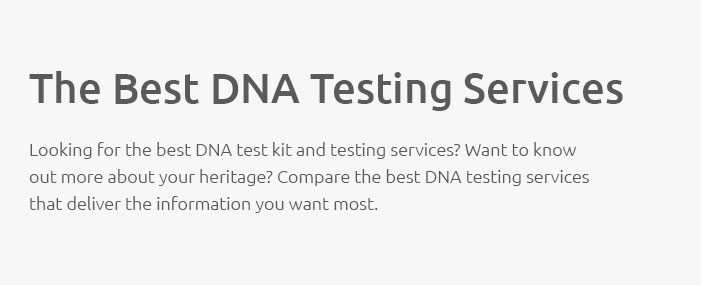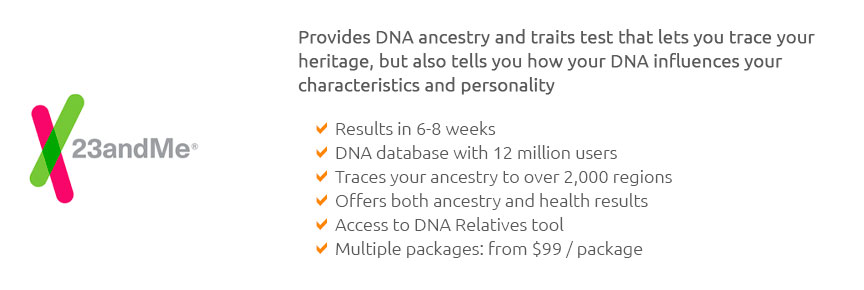 |
 |
 |
|---|
 |
 |
|---|
 |
|
|---|---|
 |
 |
 |
 |
 |
 |
 |
 |
 |
 |
 |
 |
 |
 |
 |
 |
|---|
The Reliability of Ancestry DNA Tests: A Comprehensive ExplorationIn the modern quest for identity and heritage, ancestry DNA tests have emerged as a popular tool for individuals yearning to uncover their familial roots. Yet, amidst the allure of tracing lineage through genetics, questions about the reliability of these tests inevitably surface. This exploration seeks to unravel the complexities surrounding the accuracy and dependability of ancestry DNA tests, offering a balanced view enriched with real-world examples. Ancestry DNA testing operates on the fascinating premise of using genetic markers to trace lineage. Companies such as AncestryDNA, 23andMe, and MyHeritage have made genetic testing accessible to the masses, promising insights into ethnic backgrounds, potential relatives, and even health-related genetic predispositions. The underlying technology hinges on analyzing single nucleotide polymorphisms (SNPs) within the DNA. These are essentially variations in the genetic code that can be linked to specific ancestral populations. However, the precision of such tests is not without its caveats. One of the primary concerns is the interpretation of results. Since ancestry DNA testing companies rely on databases containing genetic information from various populations, the accuracy of your results depends significantly on the comprehensiveness of these databases. For instance, if you belong to an ethnic group that is underrepresented in the database, your results might be less accurate compared to those from more extensively documented populations. Take the case of a customer who identified as predominantly Italian, only to discover a surprising percentage of Greek ancestry; this unexpected result was later attributed to the shared genetic history between these regions, reflecting the nuanced and often overlapping nature of ancestral markers. Moreover, the notion of 'ethnic percentages' presented by these tests should be approached with a degree of skepticism. The percentages often reflect probabilistic estimates rather than definitive truths. Real-world examples abound of individuals receiving different ancestry compositions when tested by multiple companies, highlighting the variability in reference panels and algorithms used by different providers. A notable instance involved a woman who, upon testing with two different companies, received conflicting reports about her Scandinavian ancestry, underscoring the need for cautious interpretation. Another layer to consider is the evolutionary timeline. Ancestry DNA tests typically reflect genetic information from the past few hundred to a couple of thousand years, which might not align with personal or familial historical records that delve deeper into the past. For example, a user tracing their lineage back to a specific indigenous tribe may find that their DNA results point to a broader regional ancestry instead, due to the limitations in distinguishing between closely related populations. Beyond the technical aspects, ethical considerations also play a role in the reliability discourse. Privacy concerns arise as users grapple with how their genetic data might be used or shared. While companies assert stringent data protection measures, the potential for misuse or unauthorized access remains a topic of debate. Furthermore, the implications of uncovering unexpected familial connections, such as unknown siblings or parents, can have profound personal impacts, as evidenced by numerous stories of individuals discovering long-lost relatives through DNA matches. In conclusion, while ancestry DNA tests offer a fascinating glimpse into our genetic past, they are not infallible. The reliability of these tests is intricately tied to the scope of the genetic databases, the methodologies employed, and the interpretative frameworks applied. Prospective users should approach the results with an open mind and a critical eye, appreciating the insights offered while recognizing the limitations inherent in genetic genealogy. As the field of genetics continues to evolve, so too will the precision and reliability of these tests, potentially unlocking even deeper layers of our ancestral stories. https://www.dnaweekly.com/
Short on time? Here are the best DNA tests in 2024. AncestryDNA Best DNA test kit overall; largest sample database in the world to match with relatives easily ... https://pmc.ncbi.nlm.nih.gov/articles/PMC6911647/
Concordance of ancestry results when twin pairs were tested by the same company was high, with mean percent agreement ranging from 94.5%99.2%. Concordance of ... https://theconversation.com/at-home-dna-tests-just-arent-that-reliable-and-the-risks-may-outweigh-the-benefits-194349
Once your genetic data are in the hands of a company with most market leaders based in the US there's a good chance they will stay there ...
|
|---|